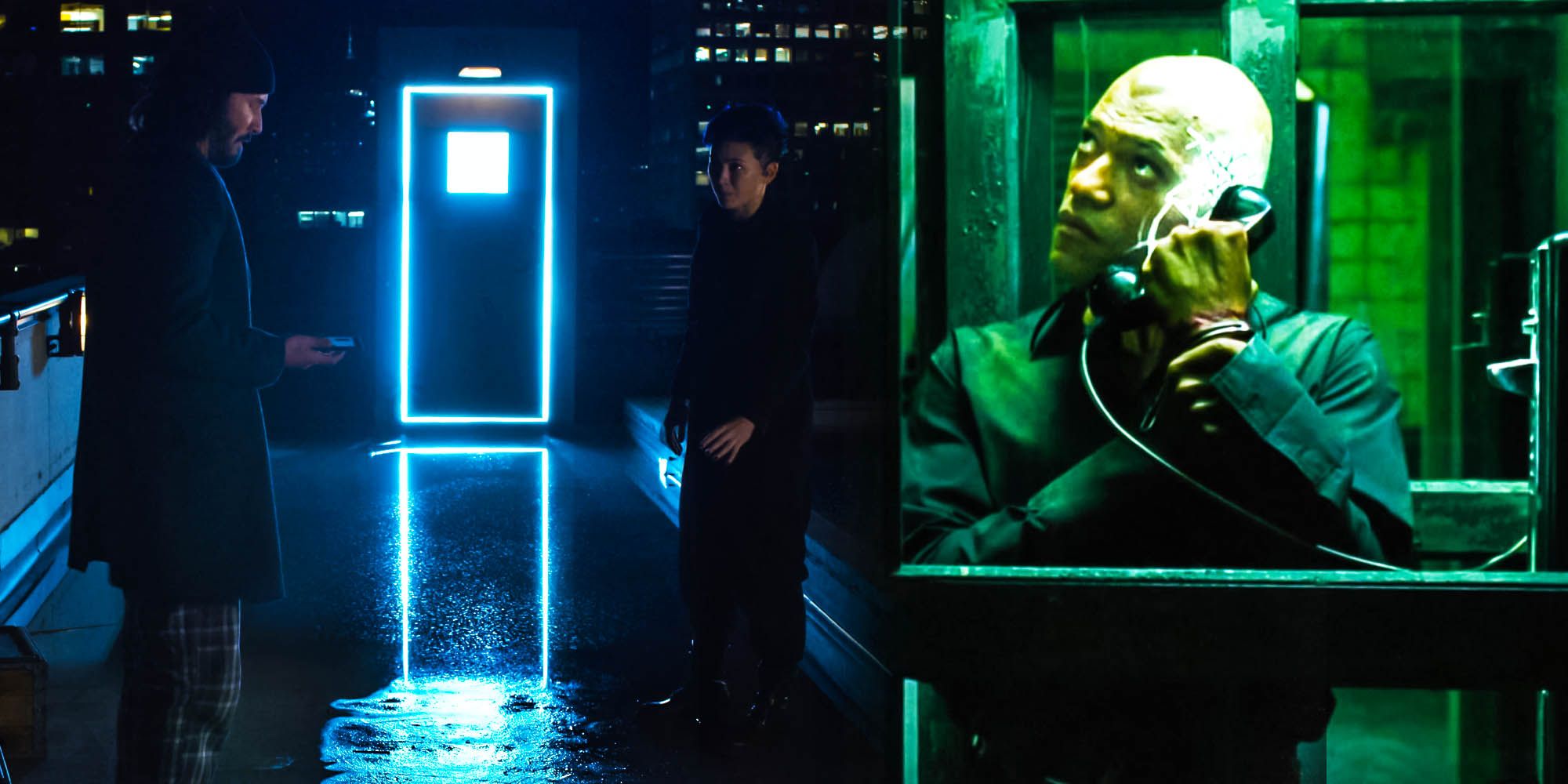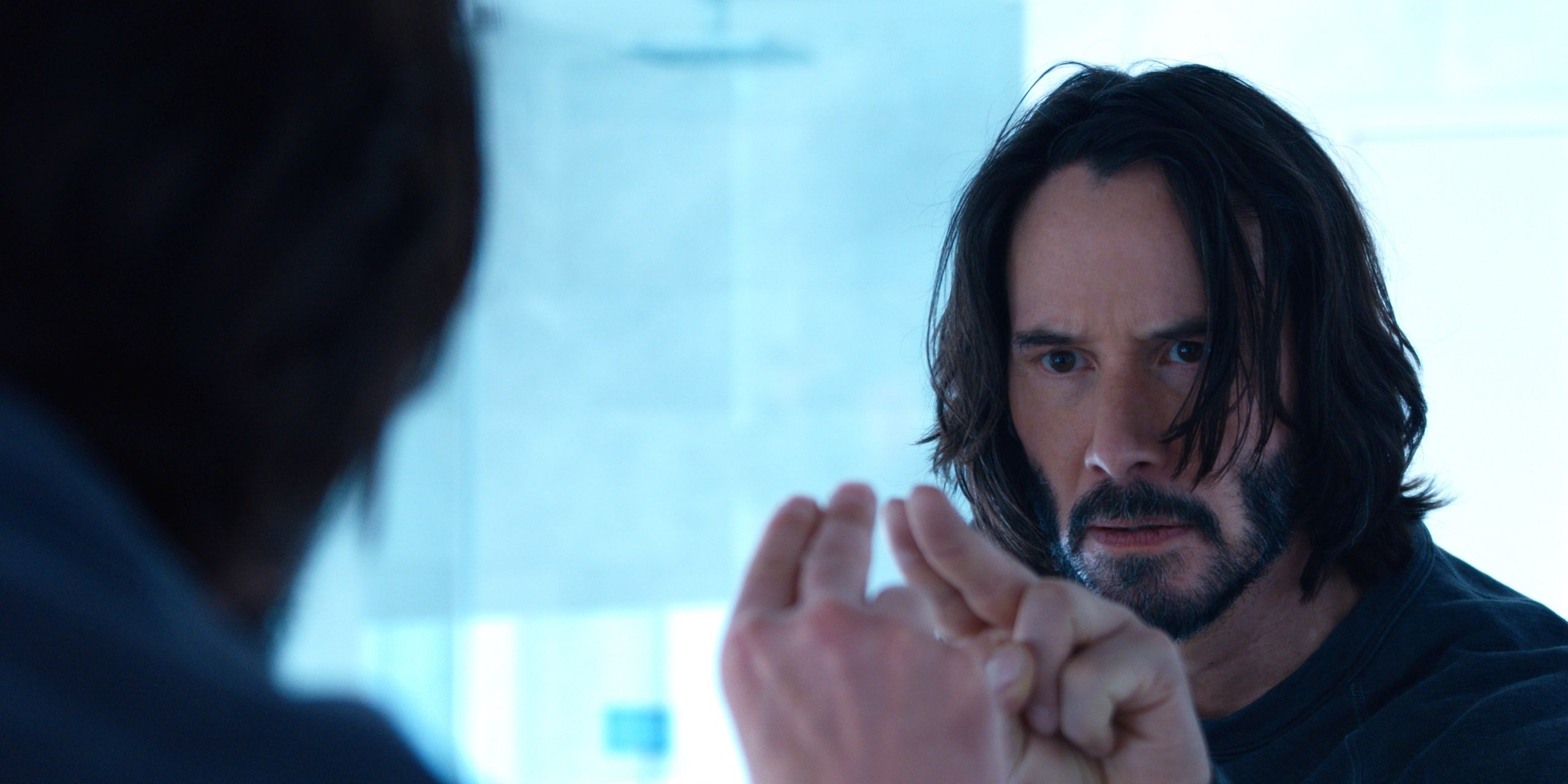In The Matrix Resurrections, the ability of jacking in and out of the Matrix is vastly different compared to the original trilogy. In the earlier iteration of the digital reality, one could only enter and exit through phone lines in the city. With the upload of the seventh Matrix iteration, access became much easier, with mirrors, windows and doors being used to enter and exit.
In the original trilogy, those who jack into the Matrix have to endure many hardships to reach the nearest phone line in order to create a secure enough link to jack out. As the Agents close in on them, they have to fight through a barrage of gunfire, fistfights, and even SWAT teams to get through. While the same situations persist in the latest iteration, the opening of The Matrix Resurrections showcases the technology in them has advanced as well, as Bugs (Jessica Henwick) later describes that they don't have to use them anymore, making their getaways from swarms and Agents less tedious. In the likely event that anyone entering the Matrix is noticed, jacking out is far simpler. In addition to the more convenient exits, Operators in the real world who could only be reached through phones before can now appear within the Matrix with the other users as holographic presences, and monitor the situation up close.
Through this Matrix Resurrections design change, other characters are able to make said exits much more swiftly, and can be unplugged just before anything happens to the digital self-images. The movie also introduces moving portals within the system which makes them harder to track. This system goes hand-in-hand with the movie's commentary on real-world technological advances. As the modern digital age becomes more accessible and less analog in nature, characters are able to do things with greater ease, and aren't as limited anymore. The version of the Matrix in the original trilogy was based on the real world of 1999, and the framework of technology back then. Many modern devices like smartphones exist in the latest iteration, and the cityscape is more urban. With the movie's many self-referential remarks on how the world has changed since The Matrix Revolutions, the access to the Matrix being made more convenient actually makes total narrative sense.
The convenience is further enhanced by the robotic creature Kujaku, who can provide a clean uplink to the Matrix separate from the machines. This aids in securing Trinity's freedom during the finale. However, while there are arguably more varied ways of getting into and out of the Matrix than ever before, the central conceit functions as a commentary on the modern age of accessibility and connectivity. By highlighting how easy it is to enter the digital prison of the Matrix – and therefore become trapped – The Matrix Resurrections actually showcases modern society's own dependence on tech and the potential implications that may have.
Like everything in The Matrix Resurrections, the path into the digital mainframe and back has evolved in more ways than one. Programs no longer function as robotic presences around the freed minds, but as regular citizens, making reality and fiction indistinguishable. To that end, even jacking in and out has become an action that can be conducted in plain sight, as long as the users aren't hit with significant interference on account of the Suits or the Analyst's methods.


